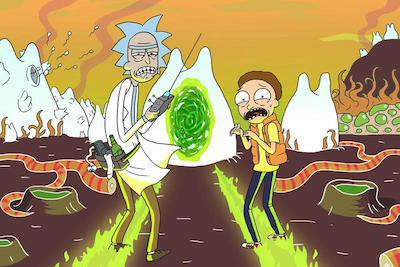

Rick and Morty, the animated science-fiction sitcom featuring the adventures of genius scientist Rick Sanchez and his hapless grandson Morty Smith is based on scientific theories. Part of Rick and Morty’s appeal is its exaggerated use of obscure scientific concepts and futuristic technology that always seem to have a tinge of truth. But how realistic are the show’s scientific ideas really, and how accurately are they portrayed?
| Scientific Theory | Rick and Morty Universe | Our Universe |
|---|---|---|
| Multiverse Theory | The world that Rick and Morty inhabit exists as part of the multiverse – a collection of different universes – offering infinite possibilities for the duo’s adventures. | Based on predictions of accepted theories – namely cosmic inflation (the stretching of the universe) and quantum field theory – there are two main ways to view how themultiversemight work: it could be like an infinite “patchwork quilt” of universes, or they could be in “bubbles” separated by empty space due to eternal inflation. |
| Portal Gun | Perhaps Rick’s most treasured tool, his portal gun allows him to open wormholes to almost every conceivable location in the multiverse. Being the universe’s most intelligent being, it makes sense that Rick has found a way to create this technology. | This would require three things in reality, writes Brady: an energy source, a means to find the right destination and, most importantly, a way to traverse wormholes. Science aside, wormholes could be feasible, but would require approximately 109 billion electron volts of energy. |
| Cockroach brains | The recent release of a “Pickle Rick” flavour of Pringles is a nod to one of the show’s cult episodes, where Rick turns himself into a pickle to get out of family therapy – only to find himself trapped in his new form. His solution: to hijack the nervous systems of cockroaches to move around,using his tongue on a roach’s brain to control its legs. | There is, in fact, a spot in a cockroach’s cluster of nerve cells (they don’t technically have brains) that can be poked to move its legs. And they have been studied as models for autonomous robots for years – so using them as a vessel to do one’s bidding might not be so inconceivable after all, for Rick at least. |
| Alien life | Rick and Morty isn’t short on characters from different planets, including the likes of Plutonians, the Gear People and the Meeseeks | Although extraterrestrial alien life to us is an exciting but still hypothetical concept, Rick and Morty characters, ike all life forms on Earth, they seem to be carbon-based, writes Brady, which is probably the case with any extraterrestrial life in reality too, because carbon is so abundant and can make numerous bonds and structures. |
| Mind-bending parasites | In episode four of season two, the Smith household becomes infiltrated by alien parasites that plant fake memories and take on the form of fictional family members and friends, including a talking pencil and giraffe. | While real-life parasites sadly can’t morph into crazy creatures, they really can tamper with host’s brains – and the results are creepily effective. The fungus Ophiocordyceps unilateralis infects carpenter ants, making them climb and attach to the underside of leaves to die. The fungus then bursts from the dead ant’s head where it can disperse its spores to the ground below. There are also parasites that affect human behaviour, like Toxoplasma gondii found in cat faeces that has been linked to schizophrenia-like symptoms in people. |





